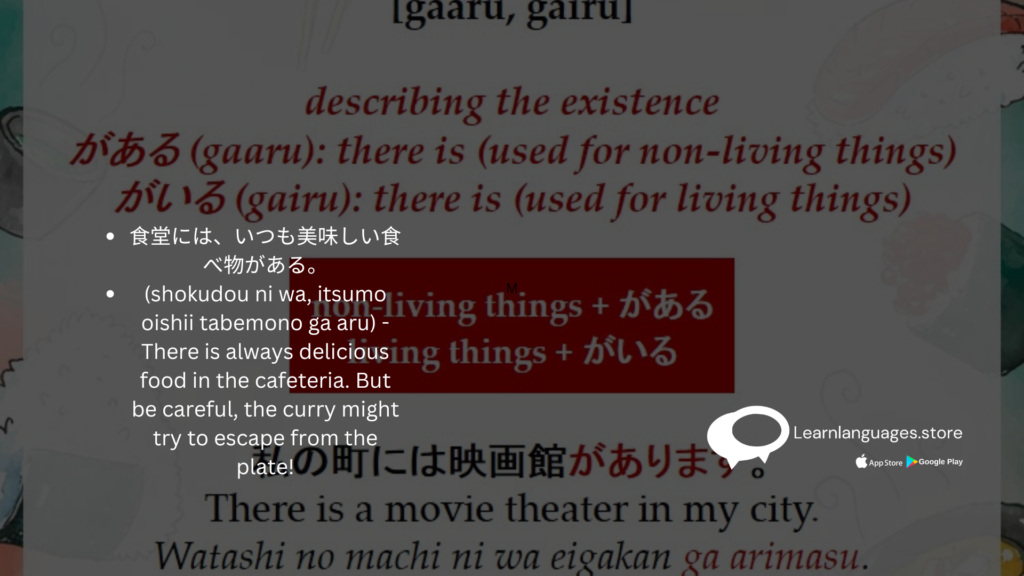Exploring the Quirky World of “〜がある/いる” in Japanese Grammar.
Exploring the Quirky World of “〜がある/いる” in Japanese Grammar.
Estimated reading time: 3 minutes

Introduction:
Konnichiwa! Welcome to another exciting adventure in the realm of Japanese grammar. Today, we’re diving into the fascinating topic of “〜がある/いる” which translates to “there is/are” in English. Get ready to explore how this structure is used to describe the existence of both inanimate and animate objects in Japanese sentences. Let’s embark on this linguistic journey together!
Understanding “〜がある” and “〜がいる”
In Japanese, “〜がある” and “〜がいる” are used to express the existence or presence of objects or living beings, respectively. Let’s break down their usage:
- “〜がある”: This is used to indicate the existence of inanimate objects or non-living things. For example:
- 部屋に本がある。(heya ni hon ga aru) – There is a book in the room.
- “〜がいる”: On the other hand, this form is used to express the existence of animate objects or living beings. For example:
- 公園に犬がいる。(kouen ni inu ga iru) – There is a dog in the park.
Exceptions and Usage:
While “〜がある” and “〜がいる” are generally straightforward to use, there are a few exceptions and nuances to keep in mind:
- When referring to people or animals that are integral to a location or setting, “〜がいる” is typically used. For example:
- 家に友達がいる。(ie ni tomodachi ga iru) – There is a friend at home.
- In formal or written language, “〜がございます” can be used as a polite form of “〜がある” and “〜がいる”. For example:
- 公園に鳥がございます。(kouen ni tori ga gozaimasu) – There are birds in the park.
Examples with Humor:
- Inanimate Objects:
- 食堂には、いつも美味しい食べ物がある。(shokudou ni wa, itsumo oishii tabemono ga aru) – There is always delicious food in the cafeteria. But be careful, the curry might try to escape from the plate!
- Animate Objects:
- 教室には、賢い生徒がいる。(kyoushitsu ni wa, kashikoi seito ga iru) – There are smart students in the classroom. Just don’t ask them to solve a math problem after lunch!
Conclusion:
In conclusion, “〜がある/いる” plays a vital role in Japanese grammar, allowing us to describe the presence of both inanimate and animate objects in various situations. By mastering this structure, you’ll be able to express the existence of things with ease and precision in your Japanese conversations. So, go ahead, practice using “〜がある/いる” in your daily Japanese endeavors and watch your language skills flourish!
-
Product on sale
 Japanese N4
Japanese N4₹18,300.00
₹24,300.00 -
Product on sale
 Japanese N5
Japanese N5₹16,300.00
₹18,300.00
Learn Languages Store
Vashi,
Email: services@learnlanguages.store










